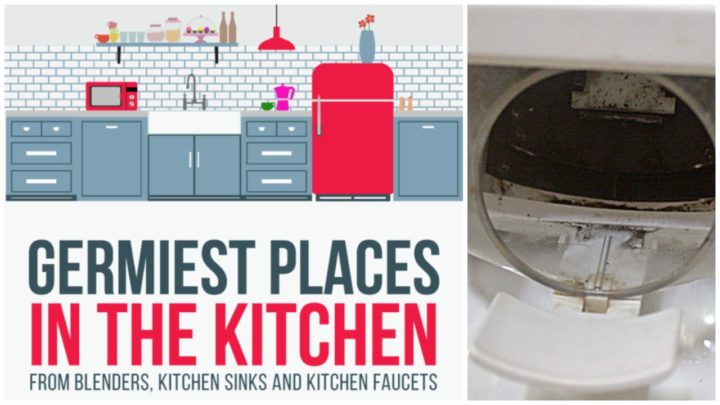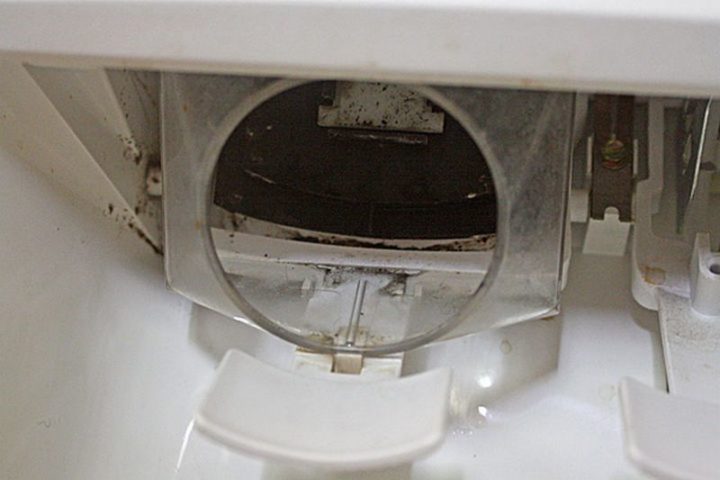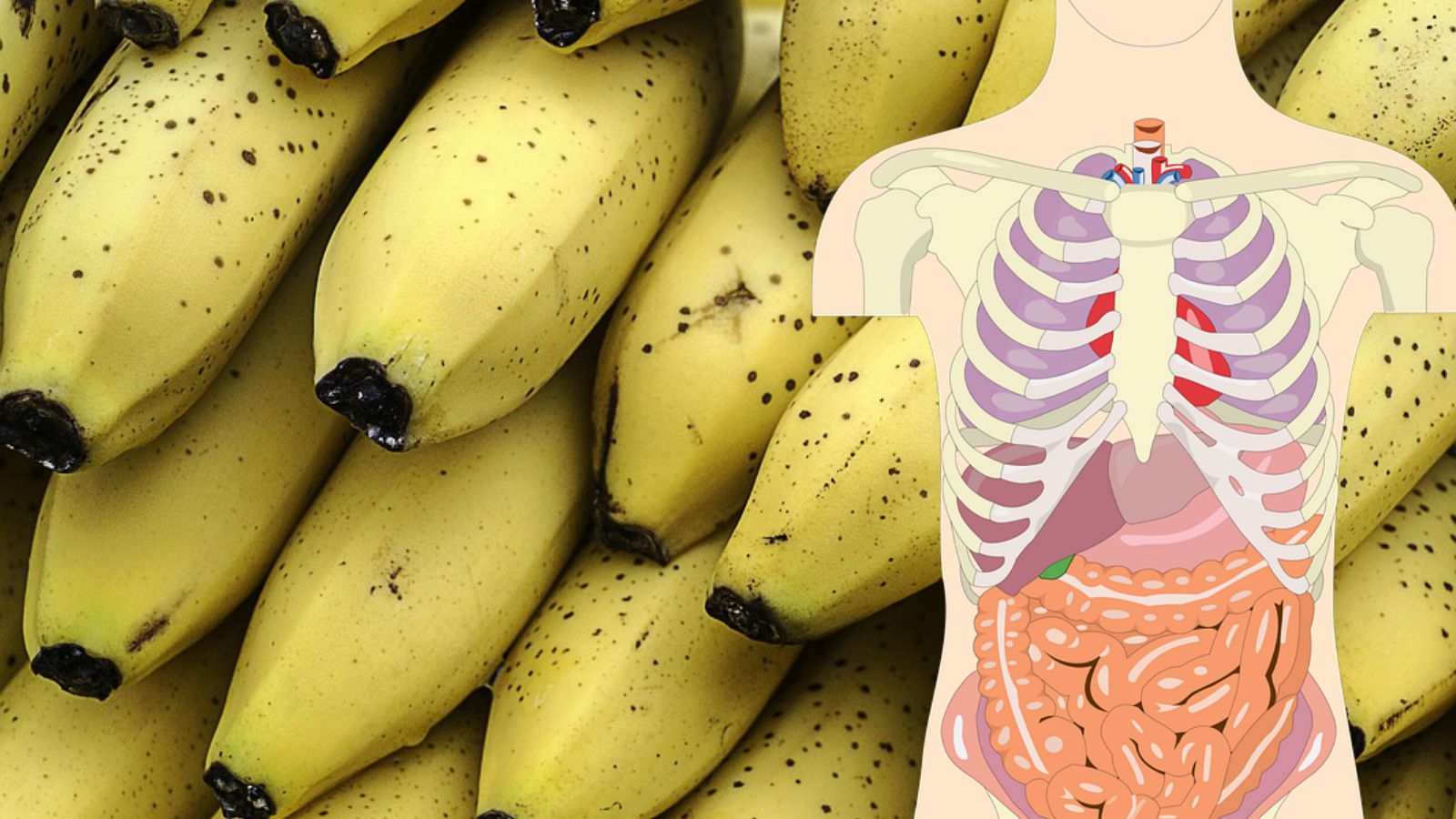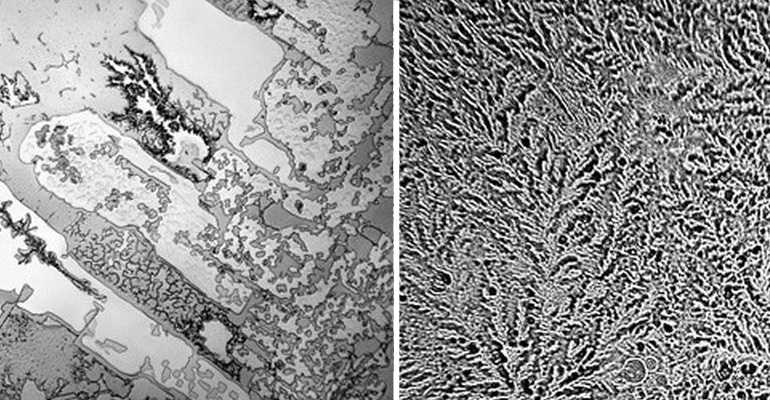The kitchen is where we spend a lot of time eating, cooking, having dinner parties with family and friends, and enjoying our morning coffee. But did you know that some of the germiest places in the kitchen are kitchen sinks, kitchen faucets, and even your refrigerator! How often have you thought about how dirty your kitchen is?

Germs can cause disease by upsetting the way the body works. Here’s how:
- Germs produce toxins and poisons.
- Germs multiply greatly by breeding and they can stop parts of the body from working properly.
- Germs attack and damage particular parts of the body.
Top 10 items and places in your kitchen with the germiest germs!
- Refrigerator water dispenser
- Rubber spatula
- Refrigerator vegetable compartment
- Blender
- Refrigerator ice dispenser
- Refrigerator meat compartment
- Knife block
- Food storage container with rubber seal
- Can opener
- Refrigerator insulating seal
What you need to know about the germiest places in your kitchen
What is Coliform?
Coliform is commonly known as a rod-shaped bacteria that is present in the digestive tract of warm-blooded animals. They are found in human and animal waste, as well as water, plants, and soil.
How Harmful is It?
Most coliform bacteria do not cause disease. There are, however, some rare strains of E. Coli that can cause disease and serious illness. Most of the reported human cases are due to undercooked hamburger meat and contaminated drinking water.
Where is it?
Coliform bacteria are present in 81% of our households. Here is where you’ll find it:
- 71% on dish sponge or rag.
- 45% in the kitchen sink.
- 32% on the countertop.
- 18% on cutting board.
- 14% on stove knobs.
- 9% on refrigerator handle.
- 9% in coffee reservoir/coffee maker.
- 5% on microwave handle.
What are Yeast and Mold?
Mold is commonly known as a fungus that grows in the form of multicellular filaments called hyphae. Fungi that develop a single-celled growth habit, on the other hand, are called yeasts.
How Harmful is It?
Yeast can cause various degrees of deterioration and decomposition in the foods that we eat. Foodborne molds and yeasts may also be hazardous to human and animal health because of their ability to produce toxic metabolites known as mycotoxins.
Where is it?
Yeast and mold are present in 31% of our households. Here is where you’ll find it:
- 86% on dish sponge ring.
- 50% in coffee reservoir/coffee maker.
- 27% on stove knobs.
- 27% on the kitchen sink.
- 23% on refrigerator handle.
- 18% on the countertop.
- 14% on cutting board.
- 5% on microwave handle.
What is Staphylococcus?
Staphylococcus has over 30 types of bacteria.
How Harmful is It?
Staphylococcus aureus causes most staph infections such as skin infections, pneumonia, food poisoning, toxic shock syndrome, and flood poisoning.
Where is it?
Staphylococcus bacteria is present in 5% of our households.
- 18% on dish sponge rags.
- 14% on refrigerator handle.
- 14% on pet bowl.
- 5% on stove knobs.
- 5% on microwave handle.
The germiest places in your kitchen: 5 tips on keeping your kitchen germ-free.

Now that we know what types of bacteria are lurking in our kitchens, the next step is to clean these places and items on a regular basis.
1) Clean your ice maker at least 2 to 4 times a year
It doesn’t get dirty, it’s only water and ice, right? Wrong. The refrigerator ice and water dispensers are the perfect environments for bacteria. For that reason, it’s important to clean the ice maker and water dispenser regularly. Ice makers can harbor bacteria or pathogens that can eventually make people sick.
2) Disinfect your kitchen sponges in the microwave.
Clean your kitchen sponges in the microwave regularly. Simply make sure the sponge is wet and microwave on high for one to two minutes to kill bacteria. Be careful when removing it from the microwave, it will be hot!
3) Clean cutting boards with lemon juice and salt.
Generally, water and soap are good enough to clean your cutting boards; however, if you used them to cut chicken or pork, make sure it’s disinfected properly before using them again. One ounce of lemon juice contains 1.44 grams of citric acid which is perfect for killing any bacteria and cleaning your cutting board naturally.
Simply cut a lemon in half and rub the first half to clean the board. Next, generously sprinkle the cutting board with kosher salt and let it sit for 10-15 minutes. Finally, use the second half of the lemon and rub the salt into the board to clean every nook and cranny. Rinse off the salt and lemon juice and dry with a clean cloth and you are done!
4) Clean your knives before placing them in the knife block.
We use knives to cut everything from meat to vegetables and generally rinse them off and return it, wet, to the knife block. To help prevent mold and other bacteria from forming, scrub the knives with dishwashing liquid and water and dry them thoroughly before storing them in your knife block.
5) Clean the kitchen sink.
If you rinse chicken, turkey, or any raw meat in the sink, it can leave behind bacteria such as E. Coli. Always disinfect your kitchen sink with bleach and water after you’ve prepared any foods with poultry, pork, or eggs that may have come into contact with the sink.
The germiest places in your kitchen. Pin it for later!

Please share these top 10 germiest places in your kitchen where bacteria can lurk with your friends and family.



